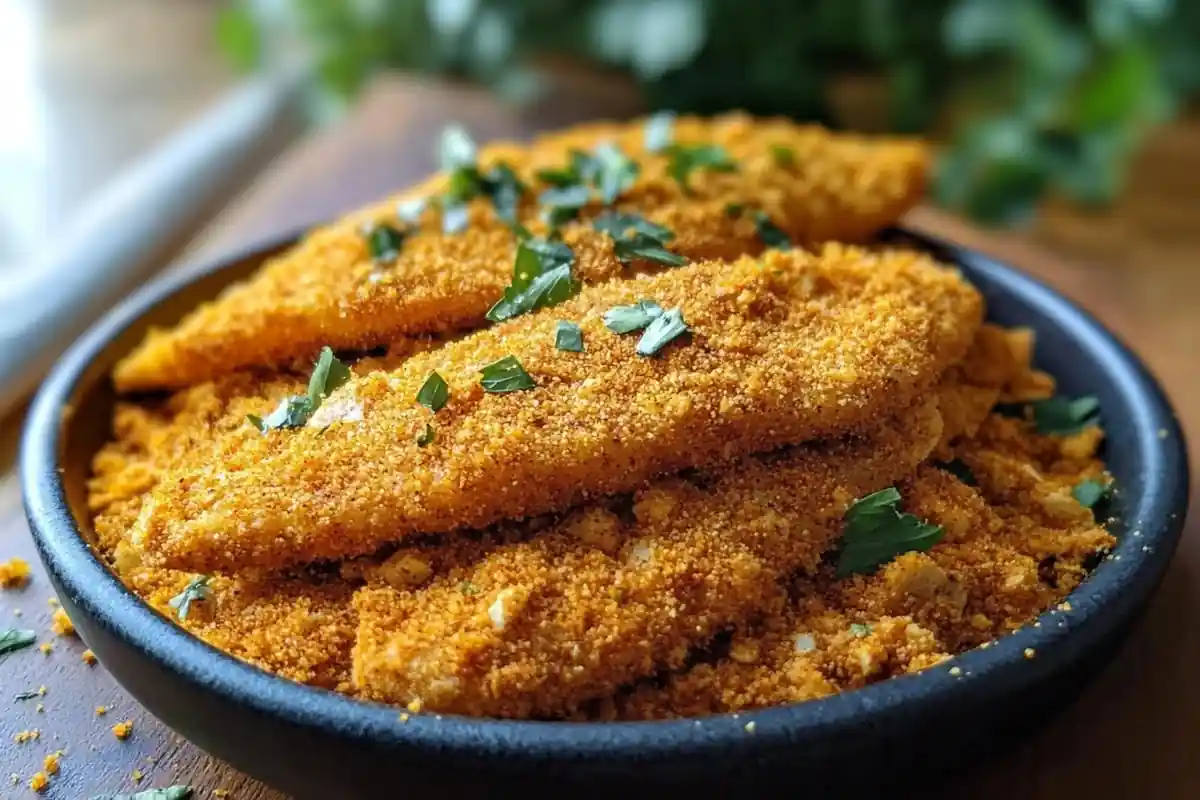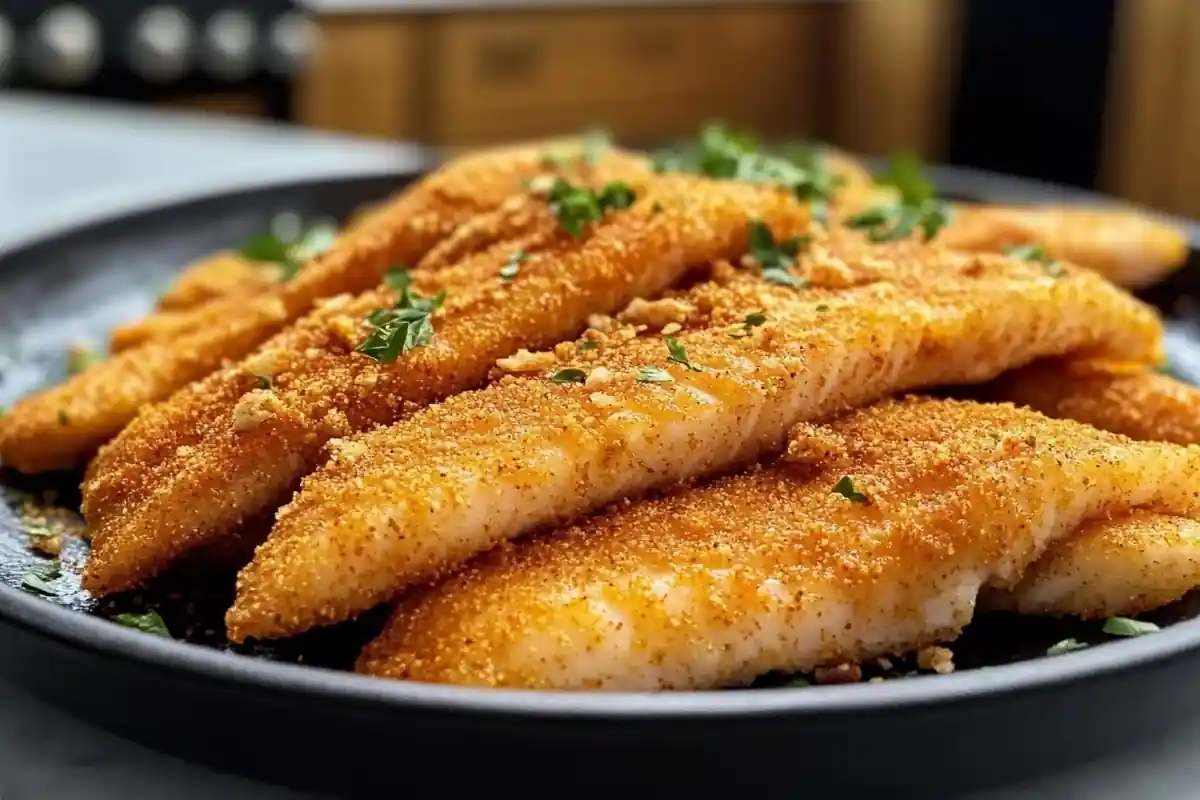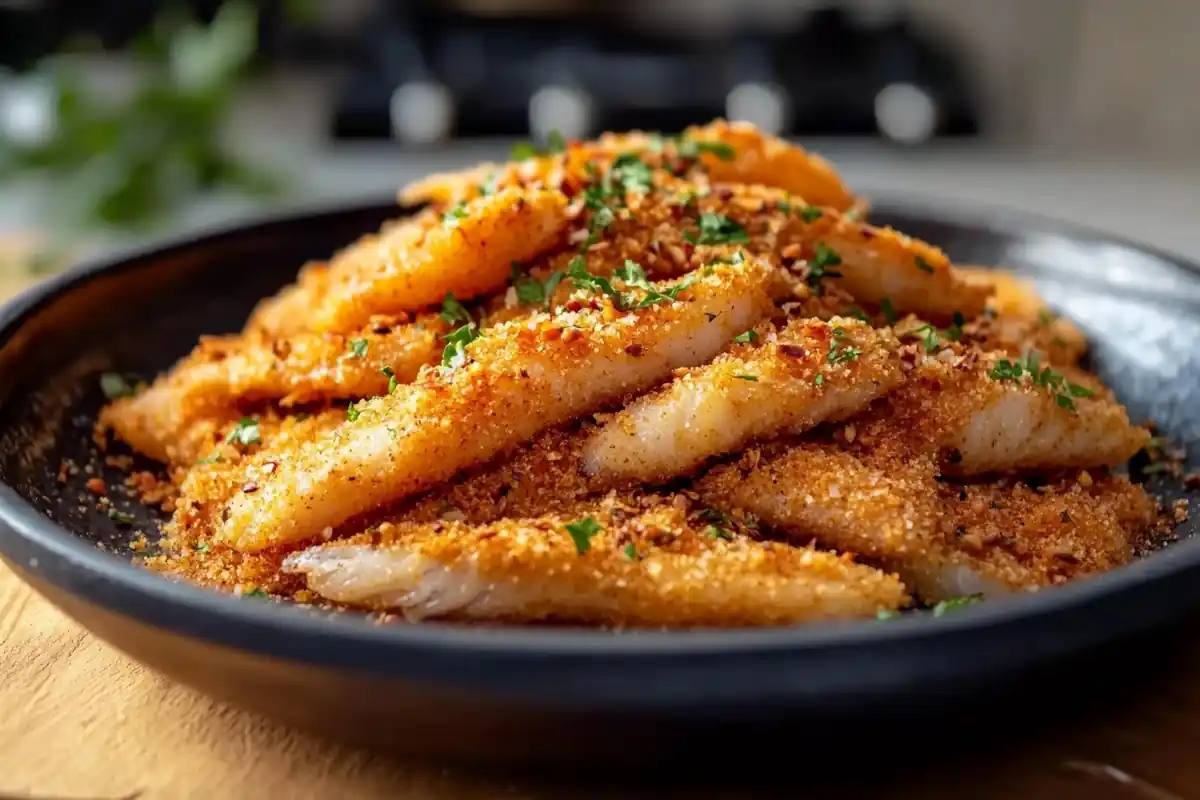Hillbilly fish fry seasoning recipe: Craving authentic Southern fried fish? Discover the secret blend! This guide unveils the perfect hillbilly fish fry seasoning recipe for a crispy, flavorful crust. Get ready for an unforgettable taste!.
This naturally seasoned recipe will give you perfectly crispy and delicious fried fish every time.
Crafting the Perfect Naturally Seasoned Fish Fry
Naturally, creating a mouthwatering fish fry starts with the right blend of seasonings. Therefore, this guide will explore how to prepare a naturally delicious and perfectly seasoned fried fish, like a true Hillbilly. However, it is not just about slapping some flavors together; it is about creating a harmonious balance. In this article, we will delve into the steps, ingredients, and techniques that ensure a crispy, flavorful result every single time. Furthermore, we will discuss why this naturally crafted seasoning mix stands out from the store-bought alternatives.
Understanding the Essentials of a Naturally Delicious Fish Fry
To begin, a good fish fry needs a base that complements the delicate flavor of the fish. Typically, that involves the right mix of spices and herbs. Therefore, this ensures every bite is bursting with flavor. Furthermore, it’s essential to understand that freshness and quality matter significantly when preparing any meal. So, selecting fresh fish and high-quality seasonings is crucial for success. Additionally, the type of oil you choose impacts the final taste and crispness, making it another important factor.
Key Components for Naturally Flavorful Seasoning
-
Salt: The foundation of any seasoning. It enhances all the other flavors.
-
Pepper: Adds a subtle kick.
-
Paprika: Contributes warmth and color.
-
Garlic Powder: Provides an aromatic and savory touch.
-
Onion Powder: Adds a deeper, more rounded flavor.
-
Cayenne Pepper: A pinch of heat (optional).
-
Dried Herbs: Such as thyme or oregano can provide depth.
-
Lemon Pepper: Adds a zesty, citrusy element.
Step-by-Step Guide to Making a Naturally Exceptional Fish Fry Seasoning
Now that we understand the core components of a great naturally seasoned fish fry, let’s dive into creating the seasoning blend. Specifically, this process is straightforward, even for beginners. Consequently, by following the instructions, you will have a seasoning blend that’s far superior to any commercial product.
Gathering Your Naturally Fresh Ingredients
Before starting, make sure you have all the necessary ingredients. This will speed up the process and allow for a smoother preparation. Therefore, it is a good idea to check that your spices are fresh and fragrant. Moreover, ensure you have all measuring tools ready to go. Indeed, the freshness of your spices is key to unlocking the best possible flavors for your dish.
Mixing Your Naturally Seasoning
-
Firstly, in a medium-sized bowl, combine 2 tablespoons of salt, 1 tablespoon of black pepper, 2 tablespoons of paprika, 2 tablespoons of garlic powder, and 2 tablespoons of onion powder.
-
Next, add 1 teaspoon of cayenne pepper if you desire some heat, or omit it for a milder blend.
-
Then, add 1 tablespoon of dried thyme and 1 tablespoon of lemon pepper.
-
Afterward, thoroughly mix all the ingredients until they are evenly distributed.
-
Finally, store your naturally crafted fish fry seasoning in an airtight container. You should keep it in a cool, dry place. Furthermore, remember to label your container with the date you prepared the blend, so you know how fresh it is.
Table of Ingredients for the Naturally Seasoned Fish Fry
| Ingredient | Amount | Notes |
| Salt | 2 tablespoons | Enhances flavors |
| Black Pepper | 1 tablespoon | Adds a subtle kick |
| Paprika | 2 tablespoons | Warmth and color |
| Garlic Powder | 2 tablespoons | Savory and aromatic |
| Onion Powder | 2 tablespoons | Deeper, rounded flavor |
| Cayenne Pepper | 1 teaspoon | Optional heat, adjust to taste |
| Dried Thyme | 1 tablespoon | Adds herbal depth |
| Lemon Pepper | 1 tablespoon | Zesty, citrusy element |
Preparing Your Fish for a Naturally Delicious Fry
Moreover, the preparation of the fish is as important as the seasoning. Therefore, ensure the fish is thoroughly cleaned and properly dried before applying any seasoning. Additionally, the fish should be cut into pieces that cook evenly, so ensure that is consistent throughout. Equally, the type of fish you use is also important, some fish are better suited for frying than others. For instance, cod, catfish, and tilapia are popular choices for frying due to their texture and flavor profiles.
Steps to Prepare the Fish Before Frying
-
First, thoroughly rinse the fish under cold water. Make sure to remove any scales or bones.
-
Then, pat the fish dry using paper towels. Excess moisture can prevent the seasoning from sticking. Indeed, this step is critical for achieving a crispy crust.
-
Next, if using larger fish, cut them into pieces of similar size. This ensures they fry evenly. Furthermore, try to keep your cuts consistent for uniform cooking.
-
Afterward, sprinkle the naturally prepared fish fry seasoning generously over the fish. Make sure every piece is well-coated. Specifically, ensure the seasoning adheres to all surfaces of the fish.
-
Finally, let the seasoned fish rest for about 15 to 20 minutes. This allows the flavors to penetrate. Consequently, this resting period allows the seasoning to fully infuse into the fish.
The Art of Frying for a Naturally Crispy Result
The frying process is vital for achieving that perfect golden-brown and crispy texture. Therefore, using the correct temperature and oil type significantly influences the outcome. Furthermore, knowing how to avoid oil splatter and achieve even cooking is a must. Additionally, the depth of the oil in your pan is important to consider. Make sure you have enough oil to fully submerge each piece of fish.
Selecting the Right Oil and Temperature
-
Choose a high smoke point oil, such as peanut oil, canola oil, or vegetable oil. These oils can withstand high temperatures without breaking down or adding a bad taste.
-
Maintain a frying temperature of about 350°F (175°C). Use a thermometer to monitor the temperature. However, do not rely on visual cues alone; a thermometer ensures an accurate reading.
Frying Techniques for Best Results
-
Firstly, heat the oil in a deep fryer or a large, heavy-bottomed pot to the correct temperature. Then, preheating your pot is important to ensure that the oil heats up evenly.
-
Next, carefully place the seasoned fish in the hot oil, making sure not to overcrowd the pot. Working in batches is better. Indeed, overcrowding can lower the oil temperature, leading to soggy fish.
-
Then, fry the fish for about 3 to 5 minutes per side, or until it is golden brown and cooked through. The time will vary with the thickness of the fish. Furthermore, the internal temperature of the fish should reach 145°F (63°C) to ensure doneness.
-
Afterward, remove the fish from the oil using a slotted spoon and place it on a wire rack to drain. Consequently, allowing the fish to drain on a rack prevents it from becoming soggy.
-
Finally, serve immediately while it is still hot and crispy. Therefore, the fish is best when enjoyed fresh from the fryer.
The Impact of Proper Frying Temperature on the Naturally Seasoned Fish Fry
The frying temperature is crucial for ensuring that the fish cooks evenly and achieves a perfect crust. Therefore, if the oil is too cold, the fish will become soggy and absorb too much oil. Conversely, if the oil is too hot, the outside will burn before the inside is cooked. Furthermore, maintain a consistent temperature. It is essential for the perfect naturally flavorful and crisp fish. Moreover, using a deep-fry thermometer throughout the frying process is highly advisable.
Naturally Inspired Variations and Serving Suggestions
While the basic seasoning is fantastic, there are many ways to customize it to your preferences. For example, you can adjust the spice levels, add other herbs, or even incorporate citrus zest. Similarly, think about how you present your fish. That can make the meal even more appealing. Basically, this is your chance to personalize the recipe and make it your own.
Enhancing Your Naturally Prepared Fish Fry Seasoning
-
Add a pinch of red pepper flakes for extra heat. Indeed, this is a great way to add an extra kick to your meal.
-
Include dried dill for a different herbal note. Also, dill adds a fresh, herbaceous element to the seasoning.
-
Mix in some citrus zest (lemon or lime) for a zesty touch. Additionally, citrus zest will brighten the overall flavor profile.
-
Experiment with different types of paprika, such as smoked paprika. Furthermore, smoked paprika can add depth and a smoky flavor.
Serving Ideas for Your Naturally Crafted Fish Fry
-
Serve with classic sides like coleslaw, hushpuppies, and french fries. Consequently, these sides are classic pairings for a fish fry and complete the meal.
-
Offer a variety of dipping sauces, like tartar sauce, cocktail sauce, or remoulade. Therefore, different sauces will offer unique flavor combinations.
-
Consider lemon wedges or a drizzle of hot sauce for an extra layer of flavor. Moreover, these additions provide a fresh and spicy element.
-
Pair with a refreshing drink, like iced tea or lemonade. Likewise, these drinks complement a fish fry perfectly.
Troubleshooting Common Frying Issues with Naturally Seasoned Fish
Even with the best preparation, things can go wrong while frying fish. Therefore, understanding some common mistakes and their solutions is very helpful. Furthermore, knowing how to fix these issues makes you a better cook and avoids food waste. However, with some careful attention and a few simple steps, common issues are easily avoidable.
Avoiding Common Frying Mistakes
-
Soggy Fish: This usually results from oil that is not hot enough. Always maintain the right frying temperature. Specifically, a consistent temperature is paramount for crispy results.
-
Burnt Fish: This occurs with the oil is too hot or if the fish is fried for too long. Use a thermometer to monitor oil temperature. Reduce frying time if necessary. Indeed, this prevents burning and ensures even cooking.
-
Uneven Cooking: This can result from overcrowded pots or inconsistent fish sizes. Do not crowd the pot. Try and cut the fish into uniformly sized pieces. Additionally, using consistent fish sizes will help with even cooking.
-
Seasoning not sticking: This can happen if the fish is too wet or you haven’t properly coated the fish with the seasoning.
Maintaining the Crispy Texture of Your Naturally Seasoned Fish Fry
-
Do not cover the fish after frying, as this will trap steam and make the coating soggy. Therefore, allow the fish to air dry for optimal crispness.
-
Drain the fried fish on a wire rack instead of paper towels. Consequently, the wire rack allows air to circulate around the fish, preventing sogginess.
-
Serve it immediately to enjoy it at its crispiest. Furthermore, serving the fish fresh is essential to enjoy the peak texture.
Table of Common Frying Issues
| Issue | Cause | Solution |
| Soggy Fish | Oil not hot enough, overcrowded pot | Ensure correct temperature, fry in batches |
| Burnt Fish | Oil too hot, over-frying | Lower temperature, reduce frying time |
| Uneven Cooking | Inconsistent sizes, overcrowded pot | Cut fish evenly, fry in batches |
| Seasoning not sticking | Fish not dried, insufficient coating | Pat dry fish thoroughly, ensure full seasoning coverage |
Frequently Asked Questions About Naturally Seasoned Fish Fry
Here are some common questions people have about making a naturally delicious fish fry.
What is the Best Fish Fry Seasoning?
The best fish fry seasoning combines a balanced blend of herbs and spices to enhance the flavor of the fish without overpowering it. Indeed, the naturally crafted recipe above provides a perfect base that can be adjusted to your taste. The best seasoning is one that you find most palatable. Additionally, personal taste should always be a factor when choosing the right seasoning.
What is the Best Seasoning to Put on Fish?
Naturally, the best seasoning for fish depends on your personal preference. However, a classic combination of salt, pepper, garlic powder, onion powder, and paprika works well for many dishes. In addition to these, herbs like thyme and a touch of lemon pepper make it even more flavorful. Furthermore, always consider using fresh and high-quality spices. Likewise, fresh spices greatly enhance the overall flavor.
What are the Ingredients in Zatarain’s Fish Fry?
Zatarain’s fish fry typically contains a mix of yellow corn flour, salt, spices (including red pepper), garlic powder, and paprika. However, making your own naturally seasoned fish fry allows you to control the ingredients and ensure freshness. Creating your mix at home is often healthier because it contains no preservatives. Therefore, you know exactly what ingredients are going into your meal.
How to Season Fish Before Frying Without Flour?
To season fish before frying without flour, simply sprinkle the fish generously with your preferred blend of herbs and spices. Let it rest for 15-20 minutes to allow the flavors to penetrate before frying. Consequently, this method ensures that your fish is flavorful, even without a flour coating. Moreover, this is a great low-carb or gluten-free method for frying fish.
Conclusion: Enjoying Your Naturally Seasoned Fish Fry
Finally, mastering the art of a naturally seasoned fish fry is easier than you might think. Therefore, by following the guidelines and recipes in this article, you can enjoy perfectly crispy and delicious fried fish every time. Moreover, remember to experiment with different spices and variations to find your personal favorite. In addition, enjoy the process of creating a flavorful and satisfying meal for yourself, your family and friends. Ultimately, this homemade approach will provide a much more enjoyable dish. Also, the satisfaction of making something from scratch is truly fulfilling.


